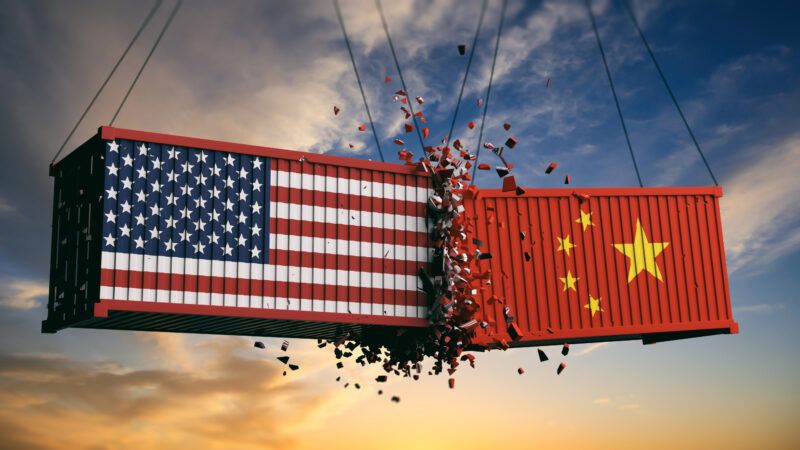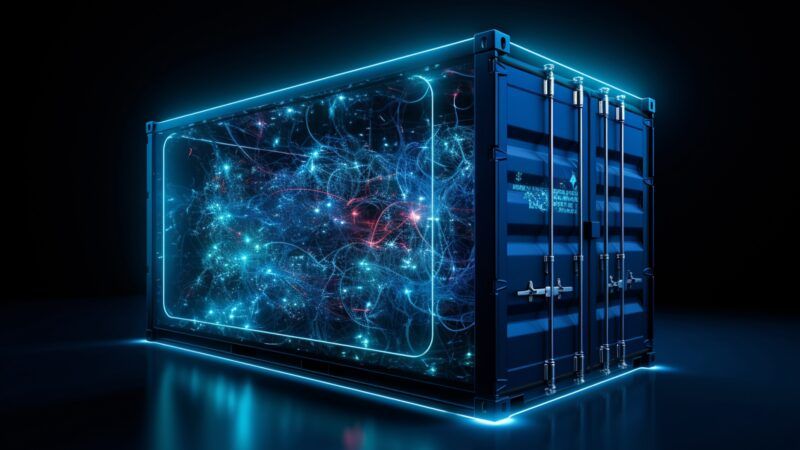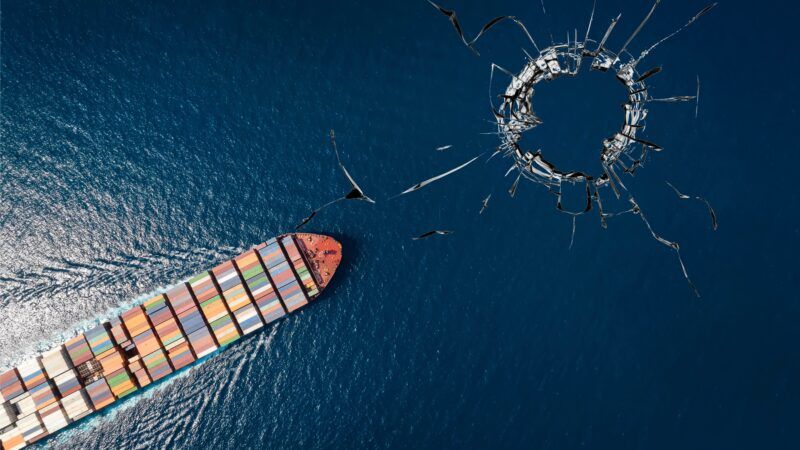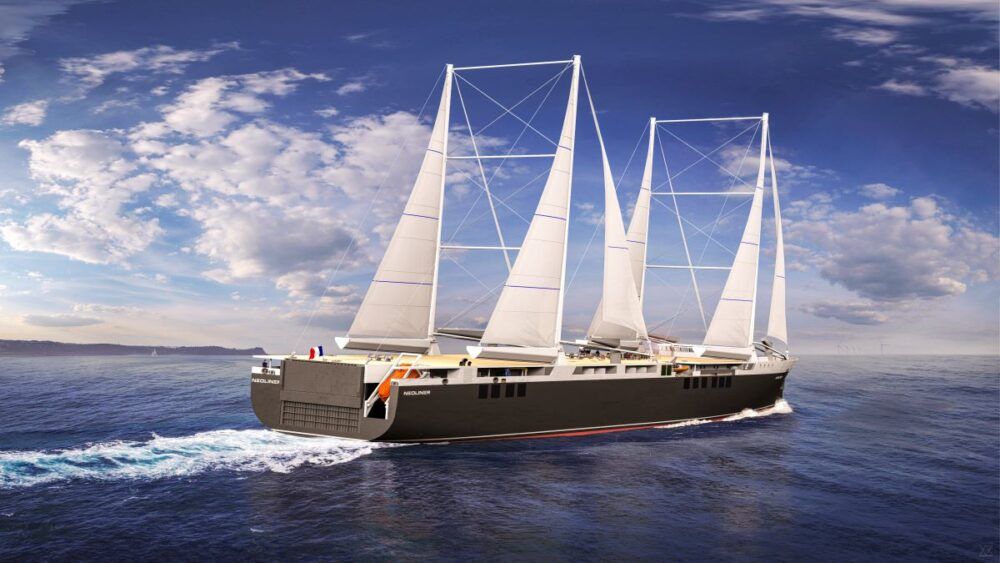 The great era of sailing returns more aerodynamic and efficient than ever with the aim of reducing emissions in maritime transport. (Neoline)
The great era of sailing returns more aerodynamic and efficient than ever with the aim of reducing emissions in maritime transport. (Neoline)
Sailing boats, the groundbreaking return of a classic
The 1940s was the last decade in which cargo sailboats sailed oceans and seas. Their end was due to the high dependence on wind stability, which caused delays in the reception and delivery of goods. But eighty years later, wingsails have returned in the shape of modern masts that raise those sails again. A commitment to wind as one of the clean energies that will contribute to decarbonise maritime transport. The great sailing era returns more aerodynamic and efficient than ever, as demonstrated by the innovations led by two companies, the Spanish Bound4blue and the French Neoline.
 The great era of sailing returns more aerodynamic and efficient than ever with the aim of reducing emissions in maritime transport. (Neoline)
The great era of sailing returns more aerodynamic and efficient than ever with the aim of reducing emissions in maritime transport. (Neoline)
Wind, an ally of maritime sustainability
Wind energy is estimated to reduce fuel consumption by 10-30%, depending on whether the weather conditions are more or less favorable during the journey. And what is even more interesting for a sector that is moving towards decarbonisation: they minimize CO2 emissions between 10% and 60%, depending on the technology used.
There are currently six types of Wind-Assisted Propulsion Systems (WAPS) whose level of maturity and development is uneven:
- Towing kite wind propulsion. The system transmits the pulling force to the boat through a synthetic fiber rope. A smart cable integrated into the rope ensures the power supply and communicates with the ship's control system.
Skysails is developing prototypes for cargo and pleasure boats. - Vertical rotating rotor. It takes advantage of the propelling force created by the pressure difference in the orthogonal cylinder to the direction of the wind.
The first of the ships to mount this model was the Maersk Pelican tanker. - Hull sails. Hulls designed to generate an aerodynamic lift. There is still no commercial project in development.
- Wind turbines. They can be installed on boats to support electric propulsion or used as a standalone propulsion system. Like the previous one, it is an option that is not yet viable.
- Soft and rigid sails. This new generation of wings are designed to assist other propulsion methods, including engines. Most sails can be lowered and stored when not in use due to their side mounting when unloading or loading cargo. Neoline is the most advanced project in this category. Another one that falls into this category is Wing Sail Mobility (WISAMO), an automated, telescopic and inflatable sail system that can be installed on both merchant ships and pleasure boats. The wing's range of use is one of the widest on the market, with proven effectiveness at many points of the sail, especially when sailing upwind. It can be used on all shipping routes and will be installed for the first time on a merchant ship in 2022, when Michelin expects it to go into production.
- Suction systems. When exposed to wind, with the suction off, it only produces drag as with any other non-lifting structure. However, when the suction is activated, a small amount of air is sucked in, which re-adheres the airflow to the sail, generating enormous amounts of lift with low drag.
The Spanish Bound4blue is an example of the latter.
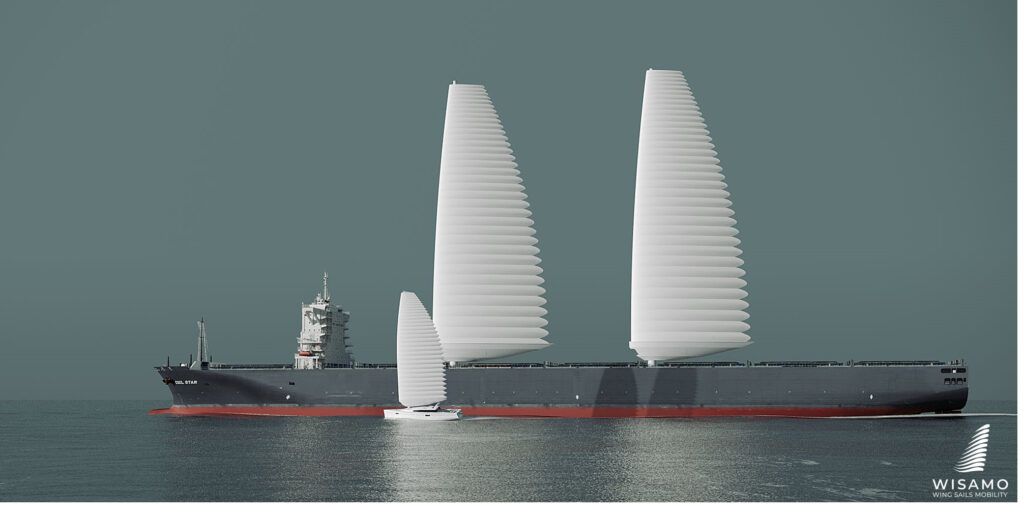
Slowing down to reduce fuel consumption
One of the most advanced projects in the field of soft and rigid sails is Neoline. It is run by seafarers, capitalized by the large French Atlantic shipowners and has technology partners such as Renault.
Jean Zanuttini, its CEO, explains that his previous experience as a Merchant Marine officer is key for the business approach, based on pragmatic solutions at a technological and operational level that combines the advantages offered by the wind and those provided by other technologies to alleviate its disadvantages.
“When we talk about energy consumption and its impact on maritime transport, factors such as speed reduction must be taken into account. Going from 15 to 11 knots makes it possible to save half the energy, with the consequent savings in emissions,” he says.
Relying on this source of energy means being contingent on its availability, and this can lead to delays in maritime trade. This fact meant the end of cargo sailboats almost 100 years ago, but now it has become a less determining factor since there are more sophisticated weather forecasting systems and the possibility of simulating routes up to ten days in advance.
Its first prototype, called Neoliner, with a length of 136 m and 24.2 m wide, 4200 m2 of sails, loads 280 teus, 1,500 linear meters of cargo and 5,000 tons of conventional cargo. It is equipped with a duplex rig and anti-drift fins, which promote regular and efficient sailing. These items are retractable to allow access to most ports.
The Neoliner will be tested on two pilots. The first, scheduled for 2023, will depart from St-Nazaire, in France, to Halifax / Baltimore, on the east coast of the United States, with stops in St-Pierre and Miquelon. "We decided to start in the North Atlantic precisely because of its wind conditions, which are the most interesting for this purpose," he says.

Wind energy is estimated to reduce fuel consumption by 10-30% and CO2 emissions by 10% to 60%, depending on the technology used
Innovation at full throttle
When it comes to pure innovation, Spain’s Bound4blue stands out for its design in two of the categories mentioned above; rigid sail, and suction sail, named eSAIL. One of the co-founders is David Ferrer Desclaux, named Innovator Under 35 Europe & Visionary of the Year 2018 by the Massachusetts Institute of Technology.
The company’s suction sail was installed on Orpagu’s Balueiro Segundo fishing vessel in the second quarter of this year, becoming the first fishing vessel in the world to use it. The sail is 12 meters high and has an autonomous control system, so it does not require an additional crew to handle it.
“We needed several weeks to calibrate the sail and the incorporated sensors, something that we had to do remotely because the ship was already sailing in the Pacific ocean. In October we will be able to draw the first conclusions and assess whether it requires improvements that increase the efficiency of the system,” shares José Miguel Bermúdez, CEO of the company.
The eSAIL produces between six and seven times more lift than a conventional wing, with minimal power consumption and without any mechanical complexity (no inertial loads, vibrations, constant movement, etc.), ensuring simple and reliable operations.
The system, as confirmed by its CEO, can also be installed on larger ships such as bulk carriers or tankers. The company already has a wingsail version that is 17 meters high.

A maritime sector receptive to reduce emissions
Regarding the response of the maritime transport to the obligation to decarbonize the sector to comply with both European regulations and the recommendations of the International Maritime Organization, Bermúdez believes that despite being “a traditional sector that has difficulty incorporating and implementing any type of change,” describes the openness of the shipping companies to systems like the one they have patented as very good. “Carrying out those first installations will allow them to assess first-hand the potential savings they can achieve on their ships and routes. It is also necessary to look for formulas that allow financing this type of systems at an early stage to facilitate their penetration,” he adds.
According to Neoline’s CEO, shipping companies are interested in the emergence of solutions supported by wind or zero-emission fuels because it will allow them to have more options to choose from. Zanutti believes that wind power can be more efficient than biofuels because he doubts about the availability of the latter if other sectors must also incorporate them into their transport systems. "Wind is the most viable option, especially on longer journeys, if the objective is not to reduce emissions by 10% or 20% but to eliminate them completely," he defends.
More sustainable sails with the help of ports
Both systems use an auxiliary power source. Neoline uses diesel, although it will soon replace it with electric batteries recycled from Renault cars. "An auxiliary engine is necessary in case wind power decreases and to achieve a speed higher than 14 knots at certain times during the journey," he justifies.
In the case of Bound4blue, the suction is produced thanks to a fan, an active system that requires power consumption to suck, rotate and align the sail. “Although it is a very small percentage compared to the net power that the sail provides to the boat, we need a certain amount of energy to be able to activate the system,” explains Bermúdez.
In the case of the French company, its CEO affirms that in the future, the ship would moor in ports with their batteries charged to contribute to the so-called 'Zero Emissions in Port', one more step towards the decarbonization of port facilities.



